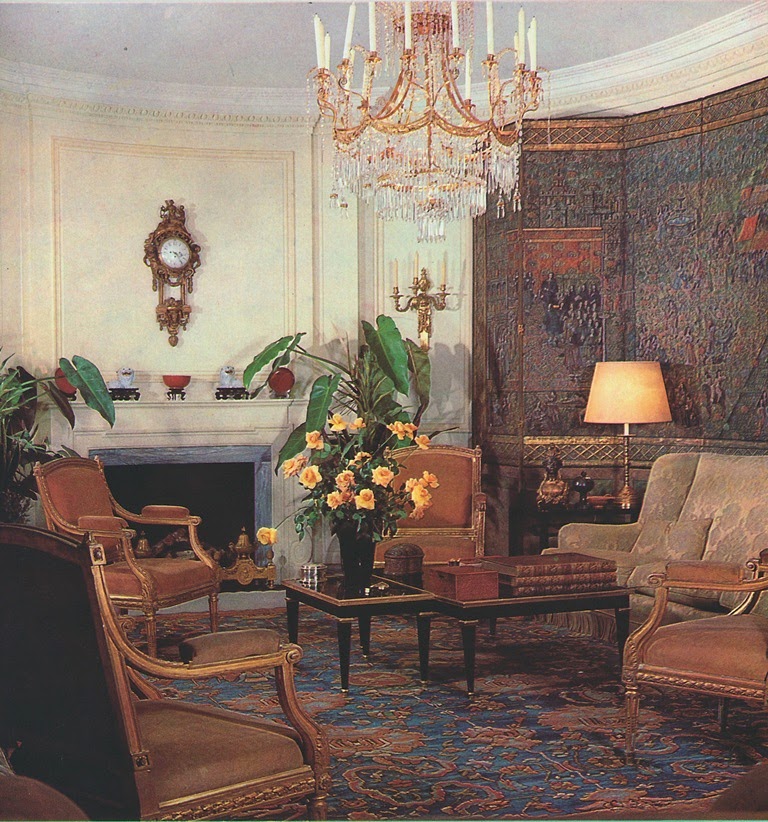I am currently reading Carleton Varney's latest book, Decorating in the Grand Manor, and I must say that his book puts me in a very jovial mood. All of that color and vibrancy, which are hallmarks of Varney's style of decorating, is like a mood-lifter and pep pill rolled into one fun read.
The book is touted as a design memoir, one which chronicles Varney's adventures in decorating in the grand style. That might sound a little pretentious, but it's really not. Varney explains that he doesn't use "grand" in the sense of "something big and over the top." Rather, he sees grand style as being "something different, spectacular, eye-catching- and exuding quality." At the beginning of the book, Varney shares a bit of his background, including his time spent working for the great Dorothy Draper. (Be sure to check out the photo of Draper and Salvador Dali dining together. It's a hoot.) Then it's on to a few pages devoted to his inspirations, which include Draper, Addison Mizner, Monticello, and Gone with the Wind. And scattered throughout the book are pages that feature the "Elements of Grand Style", such as mirrors, mantels, and flowers.
But the heart of the book lies in the chapters that profile Varney's work at such splashy resorts as The Grand Hotel and The Greenbrier as well as in private residences. Each chapter is chock full of photos that capture Mr. Color's exuberant use of color and pattern. Even if bright color and bold prints aren't really your thing, I think you'll find the photos visually stimulating.
Desmond Guinness, who penned the book's foreword, called Decorating in the Grand Manor"a virtual energizer to the senses," and it really is just that. Take a look at Varney's book, and you just might find yourself rarin' to decorate.
*To order a copy of Carleton Varney's latest book, please visit Amazon
 or Barnes & Noble.
or Barnes & Noble.A black and white entrance to the Grand Pavilion at the Grand Hotel, Mackinac Island.
The Cottage Restaurant at the Grand Hotel
The entrance at The Greenbrier, White Sulphur Springs, West Virginia.
The Penthouse at the Stoneleigh hotel in Dallas.
Mirrors...one of the Elements of Grand Style
The book's endpapers feature reproductions of the charming murals in the Grand Hotel's lobby.
All photos courtesy of Decorating in the Grand Manor by Carleton Varney.







































 ,
, 







 or
or 


















 as well as well as
as well as well as 


















 or
or  .
.






















